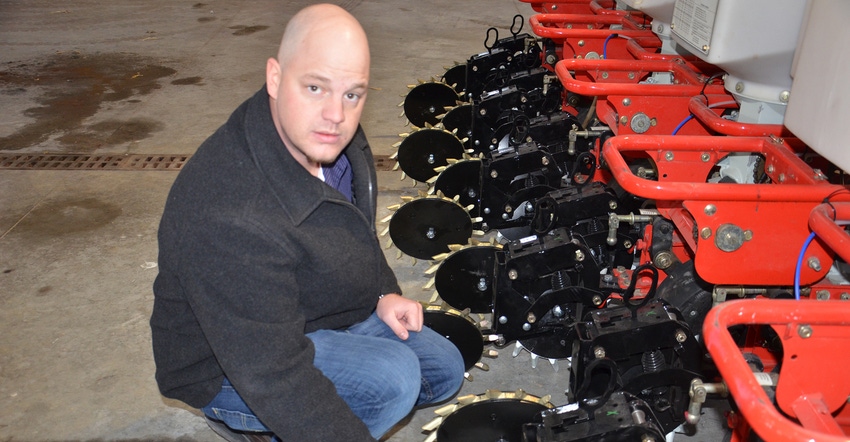
You’ve probably seen the eight-row planter set up with different closing wheels on each row, either in person or in pictures. Beck’s sets this planter up for field days to attract attention to the need to understand differences between closing wheels.
Beck’s has compared various closing wheels in its Practical Farm Research plots in no-till conditions when the soil was a bit tacky on purpose. Sometimes they find differences in yield at the end of the season, depending upon which closing wheels were used.
“It’s not one of our crew’s favorite studies,” says Jason Gahimer, with Beck’s PFR. “They have to remove all the wheels and install a set of each type in the trial when it’s time to switch out treatments.”
The planter set up with a different wheel type on each row is just for demonstration purposes. When the crew actually plants plots, each row is equipped with the same type of closing wheels.
New twist
Interest in getting the seed trench closed correctly, and how it can impact stand and even yield, spawned the release of a new product from Schaffert Manufacturing in 2016. It’s called the 4 Link Closer.
“What it does is fit onto the tail of existing row units and give the closing wheels the ability to move up and down more than traditional closing-wheel linkages,” Gahimer says. “If there is a dip or a higher spot, there is a better chance that the closing wheels can still close the seed trench properly.”
Schaffert says the 4 Link Closer option allows 7 inches of vertical travel for the closing wheels. Traditionally, most closing wheel assemblies have about 4 inches of possible travel — 2 inches up or down from dead center. In uneven conditions, that may not be enough give either way to allow the wheels to still have good contact and leave a trench where there is sufficient seed-to-soil contact in the furrow.
Closer look
Beck’s took a look at this new option in 2016 and saw promise in the concept, Gahimer says. “We saw enough promise that we want to test it in trials this year,” he says. “So it’s being included in PFR studies as one of the new trials for 2017.”
All studies are carried to harvest, and the results are published later in 2017, both in printed form and on the web. You don’t have to be a Beck’s customer to receive results from PFR studies.
There are actually two options for setting up the 4 Link Closer system, Gahimer says. You can set it up so the closing wheels run opposite of each other, which is the traditional approach. Or you can opt to stagger the closing wheels so one runs ahead of the other. Either way, you still have the advantage of more vertical travel capacity for the closing wheels, which means there is a better chance of allowing them to follow the contour of the ground.
What the PFR studies are intended to determine is whether this concept pays off in enhanced yields and profits, Gahimer concludes.
About the Author(s)
You May Also Like




